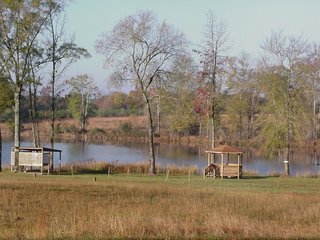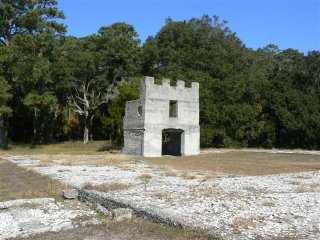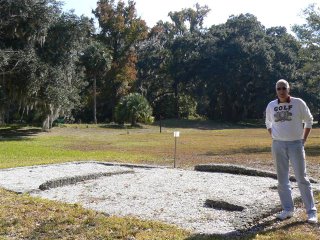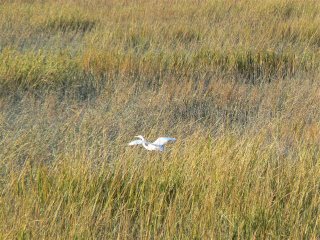
Driving north on Hwy A1A from the campground it started to rain heavily (of course it did, we left the windows open at home!). Soon after came the rainbow.

This
castle sits just off Hwy. A1A. When we pulled into the barricaded driveway I noticed a small sign that stated that the castle is a sculpture dedicated to Jesus.

According to my National Geographic Field Guide to Birds, this is a Clapper Rail. He was wandering the marsh which lines the Intracoastal Waterway that runs behind our campground.

This Willet appears to be studying his own shadow. Or he may have been contemplating the meal of crab he just finished .

Sitting so quietly in a tree across the marsh we almost missed this Great Blue Heron until the sunshine highlighted him. It's funny to see these huge birds roosting in trees--they seem too ungainly to be able to balance on small limbs so well.

A sanderling, the palest of the winter sandpipers. Tiny and fast, they dance with the waves along the shoreline.

The sun came out a bit to highlight the sail of this Canadian wintering in Florida. There is always something to see along the Intracoastal Waterway.

This is the view looking north up the waterway from the pier that sits at the rear of our campground. Peaceful, no?

These seagulls and a tern appear to be watching the sailboats with us.

Another sailor enjoying the warmer weather and taking advantage of the stiff breezes we've been having in St. Augustine.
Yesterday we just hopped in the truck and headed north on Hwy. A1A to see what we could see. We haven't been able to do that lately due to high fuel prices, but since prices have finally come down we gave it a go.
Naturally, it started to rain lightly and then much, much harder but the shower was relatively brief and provided a rainbow at the end. We weren't looking for anything special, just seeing what there was to see since we hadn't driven this route before.
Florida has designated a large amount of land to the
Guana-Tolomato-Matanzas reserve which stretches for miles along Hwy. A1A. We didn't realize what it was until I checked the Internet after we got home, but I think it's wonderful that Florida set this land aside for the preservation of the habitat of so many creatures. On the beach side of the highway are the residences and winter homes that vary from tattered wooden structures to huge stuccoed mansions. As you approach the city of Ponte Verda the homes disappear behind security gates, curving driveways and huge berms covered by lush vegetation and stately live oaks dripping with Spanish moss. Occasionally you get a glimpse of a fabulous home, but most are hidden from site.
We drove past the Sawgrass TPC Golf Course and wondered how much it would cost to play a round of golf there (certainly beyond our budget). Continuing north we finally hit Jacksonville Beach. Years ago in the early 1980s Denny managed the Dayton Metro softball team and we traveled to Jacksonville for a large softball tournament hosted by the Jacksonville police department. We drove along the beach boulevard searching for the hotel where the team stayed but the strip has changed; the hotels have disappeared and huge, expensive condominiums are going up in their place. Ah well, we have our memories.
It was time to return home to wander the campground and see what we could see there. And now you have seen it too.
 The St. Augustine Lighthouse.
The St. Augustine Lighthouse. Same shot, with clouds an hour later.
Same shot, with clouds an hour later. The fresnel (fre NELL) lens of the St. Augustine lighthouse.
The fresnel (fre NELL) lens of the St. Augustine lighthouse. The fresnel lens of the St. Augustine lighthouse from within the lens.
The fresnel lens of the St. Augustine lighthouse from within the lens.
 The view from the lighthouse looking east.
The view from the lighthouse looking east.













































